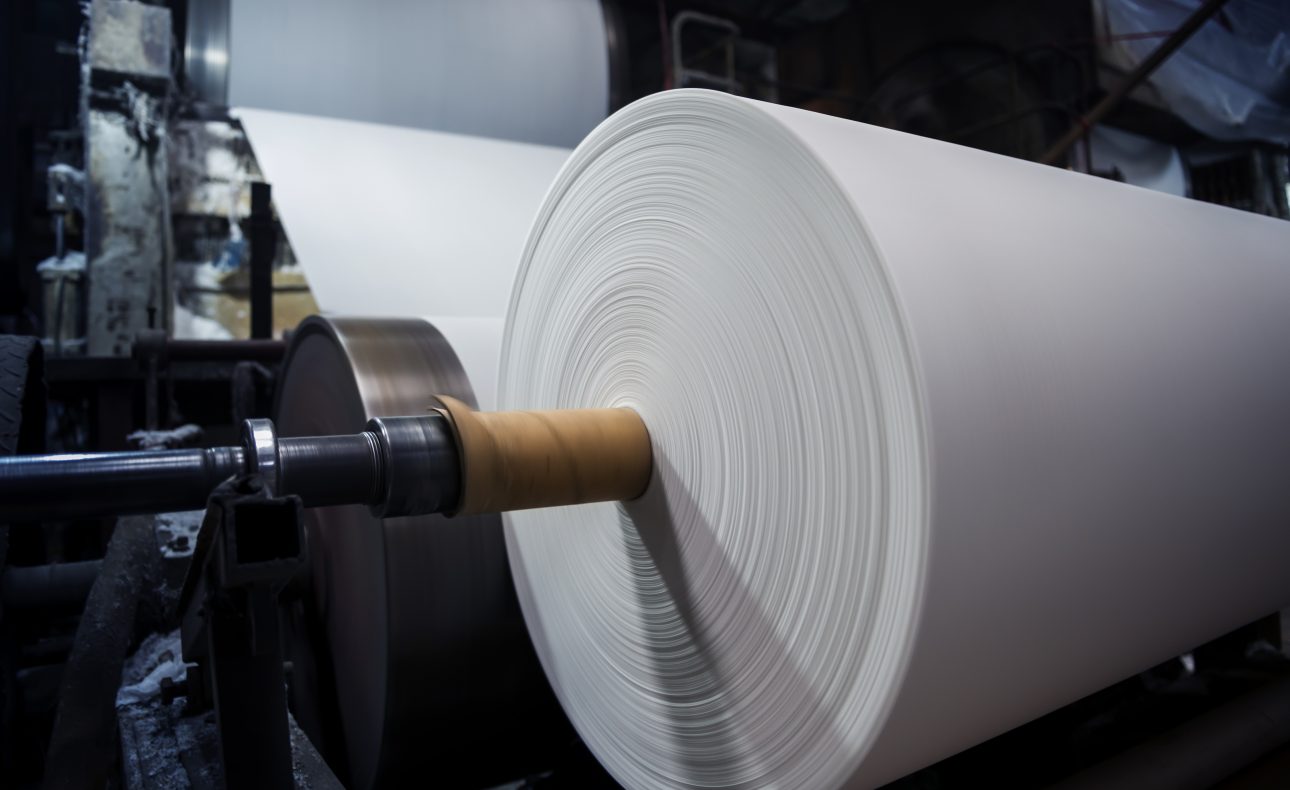“Dear readers, our magazine will not be printed this week in protest against the terrible paper situation.”
That was an announcement made by Ali Mirfattah, the editor-in-chief of Persian weekly Kargadan on Dec. 8, 2017. Similar statements have been published by managing editors of other Persian periodicals. The Persian daily named Cinema even ceased publishing print editions for a week to voice its displeasure over the dramatic rise in paper price.
“Two months on, the story still has legs,” Gholamreza Shoja, the CEO of Iranian Lithographers Cooperatives, the representative of Print Industry Association and the representative of Paper and Cardboard Consumers of Iranian Provinces, Except Tehran, told Financial Tribune.
“Many printing houses are on the verge of collapse; the books are ready but can’t be printed due to paper shortage,” he said.
“In a letter I wrote to the Ministry of Culture and Islamic Guidance in March, I warned about the looming crisis of paper this year. Each ton of newsprint—paper consisting mainly of wood pulp and most commonly used to print newspapers and other publications as well as advertising material—costs about $200 more compared with the same time of last year.”
But what’s behind the price rise? The answer is anything but simple, as several factors have contributed to the problem.
Election Season and Rise in Global Prices
Firstly, an election year is traditionally characterized by higher paper consumption. The current Iranian year (started March 21, 2017) was not an exception.
“The country held two elections this year: presidential and city council elections. Almost all paper used in campaign advertising were imported. None of the candidates could put up with having their pictures printed on locally-produced paper,” Shoja said.
Secondly, global paper prices have seen a steady rise since last March, the businessman said.
“Mills’ costs have gone up, raw materials and energy prices have gone up on a global scale and the paper price increase is directly related to that. Some major international paper mills have even indicated that further increases have yet to come in 2018,” Shoja added.
Chinese Factor and Psychological Reaction
To address its infamous pollution, China shut down a number of its major papermaking mills last year. The Asian country, which is one major exporter of paper, was even forced to import certain types of paper this year. The decrease in supply drove up demand and prices.
Shoja also attributed the rise in paper prices to the news that broke in October, saying that the Ministry of Industries is planning to raise import tariffs from the current 5%.
Noting that the ministry has not raised tariff on paper imports for the past three years, the businessman said traders who feel psychological insecurity would switch to imports of less risky items than paper.
Rial Devaluation
On top of all these, the appreciation of the dollar against the rial has also contributed to the paper price hike.
Over the past few months, foreign currencies set an accelerating bullish trend in Tehran’s foreign exchange market and prompted the rial to fall to record lows.
Although importers of essential goods, including paper, can enjoy the government’s foreign exchange reserves at lower levels than the market rate, they too are receiving foreign currency at higher prices these days.
Consumption, Production, Imports
Iranians consume about 2 million tons of different types of paper and cardboard, of which 400,000 tons a year are used for publications (books, newspapers, magazines, etc.)
“Imports accounted for almost all consumed paper in the current Iranian year (March 2017-18). Local production cannot even claim to have met 5% of newsprint consumption in Iran,” Shoja said.
There are three paper mills in Iran: Mazandaran Wood and Paper Industries, which is a state-run company that is overstaffed like other public factories; Amirabad Paper Mill in Behshahr located on the coast of Caspian Sea and Pars Paper Company Iran in southern Iran.
Pars Paper Company was established nearly five decades ago and has yet to reach its nominal production capacity. Its only production is bagasse pulp.
Bagasse is the fibrous matter that remains after sugarcane or sorghum stalks are crushed to extract their juice. The plant is commonly used as a substitute for wood in many tropical and subtropical countries, including in southern Iran for the production of pulp, paper and board. It produces pulp with physical properties that are well suited for generic printing and writing papers as well as tissue products, but it is also widely used for boxes and newspaper production.
“Unfortunately, our producers have failed to make use of this God-given gift to the country. Every year, over 2,000 tons of bagasse are set on fire to remove plants that are already growing and to help the plants that are about to come up. This agricultural practice generates thousands of tons of hazardous air pollutants,” Shoja said.
It’s been three years now that the government has imposed logging bans in northern forests of Iran exploited by Mazandaran Wood and Paper Industries.
These factories import all their raw materials and have to pay a 9% value added tax and performance tax plus insurance premiums for their employees. In practice, domestic paper mills are operating at a loss.
Shoja questioned the environmentally-friendly claims about stone paper. Last May, Iran’s first-ever stone paper factory opened in the city of Shendabad in East Azarbaijan Province’s Shabestar County.
Factories producing stone paper claim it is a better alternative to the pulp-based standard, as it does not use trees, water, chlorine, acids, or petroleum in its creation. It is primarily made from calcium carbonate, one of the most common substances on the planet.
“The calcium carbonate is ground into a fine powder and mixed together with a small amount of high-density polyethylene. HDPE is one of the most common plastics in the world and like normal plastics stone paper won’t degrade soon,” he said.
Noting that locally-produced paper is 15% more expensive and its quality is lower than that of imported paper, Shoja said, “I believe that establishing new paper mills in Iran is not economically viable due to the shortage of water and lack of forests. It is better for the government to lend support to the existing paper mills by granting certain facilities, including tax exemption and employer-paid premiums for insurance and offering them low-interest loans.”
Per capita consumption of printing paper is one of the indexes of a nation’s cultural growth. North America has the world’s highest per capita paper consumption in the world, consuming 221 kilograms per year.
According to the 2015 data, per capita paper consumption for Europe is 129 kg, Australia 116 kg, Asia 45 kg and China 75 kg.
“In Iran, sadly, per capita printing paper consumption hovers between 14 and 17 kg. This clearly shows that the domestic paper industry requires more economic support from the government,” Shoja concluded.



